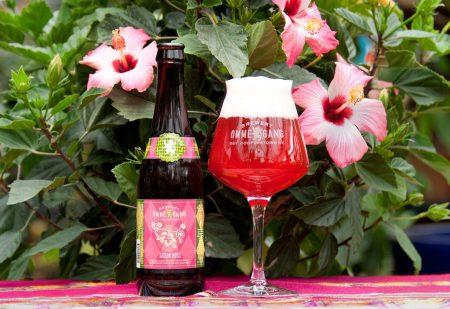 The newest trend or newest revived trend in drinks right now is rosé or pink drinks. If you're not familiar rosé, think pink wine. The rosé color is made through natural processes. Wine grapes have three color types: red skin with red inner pulp, white (greenish) skin with white inner pulp, and red skin with white inner pulp. The first type will only make red wine and are actually fairly rare. The second type will only make white wine. The third type, however, can conceivably be used to make red, white, or rosé wines. The third type is also the most common type of red wine grape and include Cabernet Sauvignon, Zinfandel, and Pinot Noir.
The newest trend or newest revived trend in drinks right now is rosé or pink drinks. If you're not familiar rosé, think pink wine. The rosé color is made through natural processes. Wine grapes have three color types: red skin with red inner pulp, white (greenish) skin with white inner pulp, and red skin with white inner pulp. The first type will only make red wine and are actually fairly rare. The second type will only make white wine. The third type, however, can conceivably be used to make red, white, or rosé wines. The third type is also the most common type of red wine grape and include Cabernet Sauvignon, Zinfandel, and Pinot Noir.
When the red skin/white juice grapes are crushed, the juice will run white. If the producer is careful, they could conceivably produce white wine from a red grape. It's skin contact that creates the red color. The longer the skin is in contact with the juice, the more red color will be extracted. A lot of the flavor components in red wine also come from the skin contact. So, if you're looking to make a wine that is just pink and not fully red, the producer will only keep the skins in contact for a short time. This will impart just the right amount of color and flavor components creating a rosé wine.
Beyond wine, rosé is also possible with ciders. There are a few varieties of apples that are called "red flesh." Almost all apples have a white flesh under whatever color the skin is. The few red flesh apples will create a pink a juice when crushed. However, the timing has to be perfect when they're picked or the red flesh won't produce optimal colors. Unfortunately, there aren't that many varieties or planted acres of red flesh varieties so cider makers have to resort to other methods. These methods are pretty simple and employ techniques modern cider makers have been using for a while. They just add some other fruit juice to tint the color. Most of the time, the added fruit/fruit juice is meant to be the main star of the fruit blend cider, but in the cases of rosé it's done with a light touch to get a delicate pink color which also leads to a more delicate fruitiness.
With wines and ciders getting all the pink drink love, beer felt left out, until now. There has been an increase in rosé beers. There is no way to create a rosé with just the four basic ingredients of malt, hops, yeast, or water. To achieve a pink color, something must be added. In some cases it's fruit, in other cases, something more exotic. Ommegang's Saison Rosé uses the hibiscus flower to create its pink hue. Hibiscus has become an increasingly popular adjunct in brewing due to the vivid color and deep flavors it can add. However, it's a fairly delicate balancing act as too much will completely overpower the beer. Fortunately, a rosé is an ideal place for the hibiscus because you only want enough to get just the right color.
Ommegang Saison Rosé starts as a delicate saison brewed with hibiscus that goes into stainless steel for its co-ferment with chardonnay juice. They then brewed a bigger saison that was wood aged. To finish the beer, they blended the two different saisons together to create Saison Rosé.
Appearance: Pinkish/Plum red with a light haze, pink head, great retention
Aroma: Fruity, floral, spicy, vinous
Taste: fruity, oaky notes, earthy, minerally
Overall Impression: Saison Rosé is an exceptionally tasty and enjoyable beer. The flavor combination of all the different methods and ingredients blend well to create a beer that's both complex but quaffable with a nice light tartness and a dryness that should be the hallmark of all saisons. This is a fun and enjoyable beer with great flavor, can't beat that combination!
Availability: Seasonally where Ommegang beers are sold.
7.7% ABV
Read more of my Ommegang reviews here.
